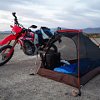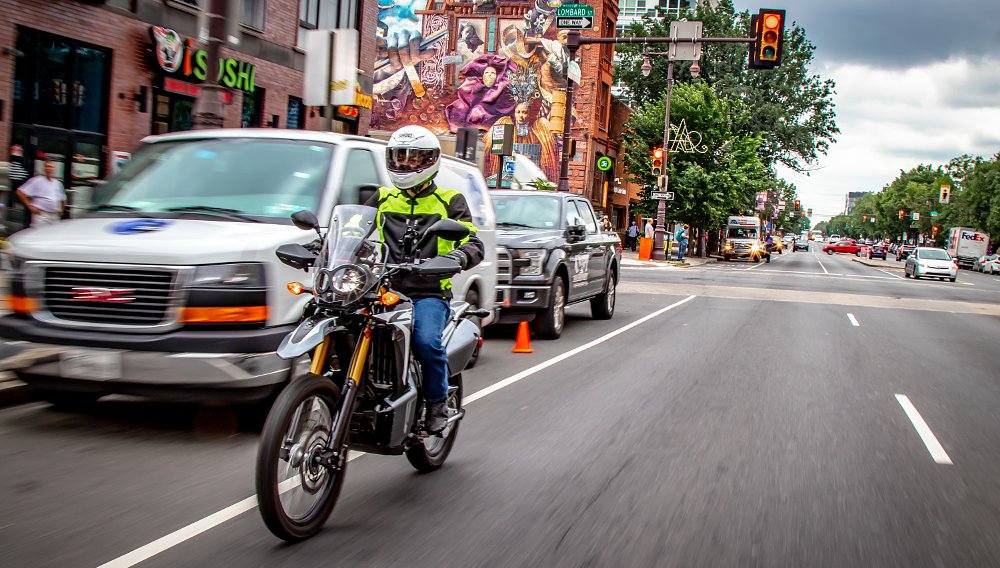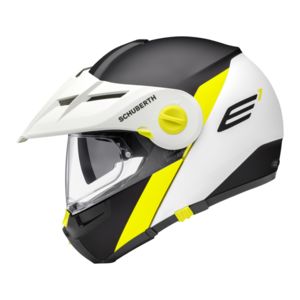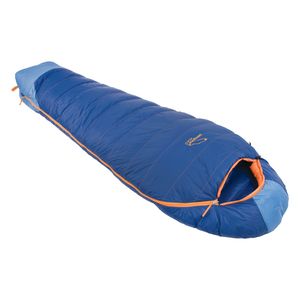When we release a new moto-adventure video, people often ask what bike I was riding. Or rather, they ask what bike the cameraman (homo sapien cameramanis) was riding. Well, that cameraman is me. My name is Spenser, for what it’s worth.
For the better part of the last 10 years I’ve been filming and photographing motorcycles around the world. Usually with a couple of guys named Zack and Ari in front of the lens. The three of us have made a lot of videos together but some memorable ones include Honda Monkeys in Baja, Scramblers in the Rockies, the Bovine Biker in Nepal, and most recently, Cheapskate Escape! CSC RX4 vs. Royal Enfield Himalayan.
Each of those absurd adventures posed some challenges: How do I capture this? How do I carry all of my camera equipment, get as close to the action as possible, and remain agile enough that it doesn’t take us 10 days to film what could be done in five? The answer, of course, is to ride a motorcycle. In the case of our Himalayan vs. RX4 video, the specific answer was to ride a 2020 Honda CRF250L.
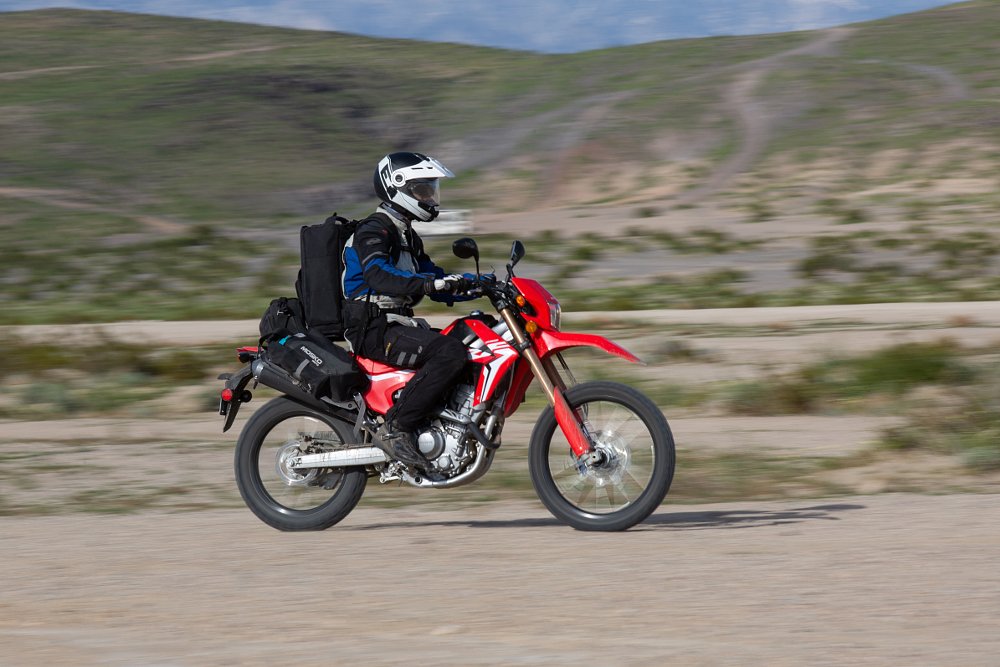
If you’re interested in a straightforward review of Honda’s diminutive dual-sporter, Revzilla has you covered with a first ride review and this second opinion on the Rally version. If you’re interested in how a bike like the CRF enables us to make a motorcycle TV show, or how well the thing works when loaded down with 60 pounds of camera equipment and camping supplies, then stick around and I will happily scratch that itch for you.
The rules of choosing a camera bike
While I don’t have the luxury of choosing any bike in the world when we set out to film a new episode, there are usually a handful of options. The first rule, broadly speaking, is that my bike should be a more reasonable version of whatever the guys on camera are riding.
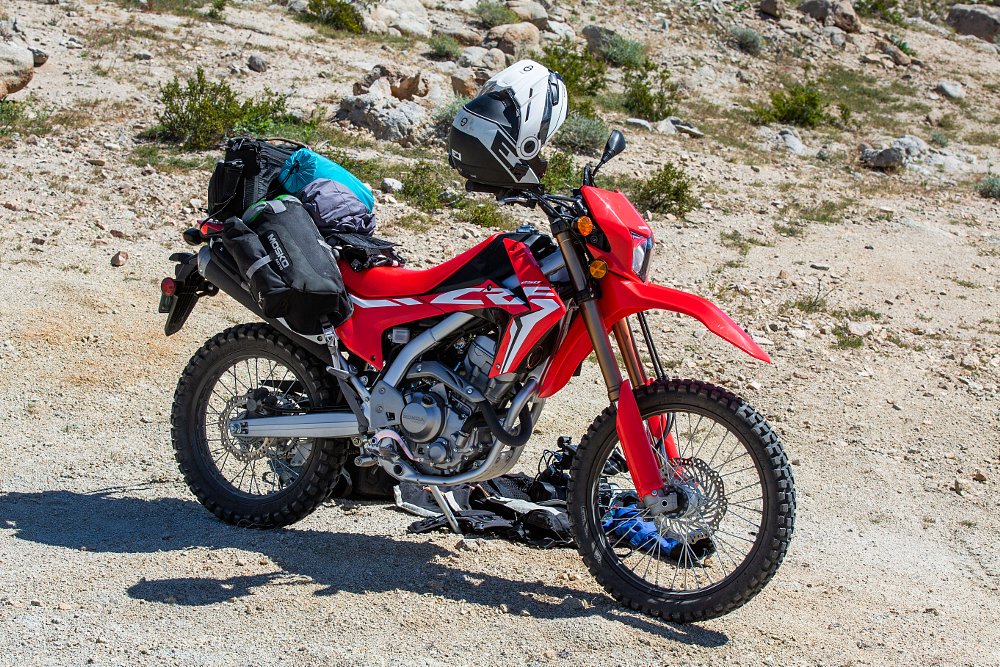
Part of this is because it’s funny to be riding something practical and capable while Zack and Ari flail up a mountainside on silly machines in the name of motorcycle research. They’re both far more talented riders than I am so it’s nice to savor those rare moments of superiority. More importantly, I need to be able to cover the same terrain they cover and do it with less skill and with expensive equipment strapped to my back. Since I’m not a part of the episode, there are no bonus points if the three of us have to push my bike up the hill, as well. Though, that’s still happened from time to time.
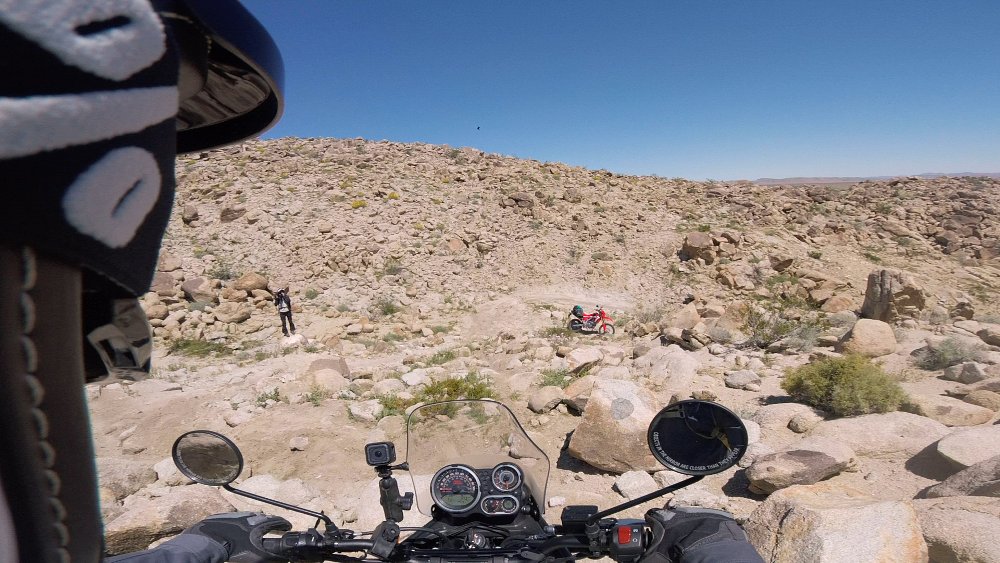
And finally, it’s helpful when my bike can provide context. In the case of the RX4 versus Himalayan video, having the CRF250L around (instead of something like an Africa Twin) allowed us to compare, even anecdotally, yet another small-bore adventure bike. Which begs the question: How did the CRF250L stack up?
CRF250L versus the world
Since the RX4 and Himalayan are both 400-plus cc adventure bikes that cost around $5,000, I initially thought a CRF450L would be the ideal chase bike. The spec sheet disagreed. With a sticker of $10,399, a 37.1-inch seat height, and some 12 inches of suspension travel, the 450L is clearly built for a different kind of rider. Put simply, it is faster, taller, more expensive, and more difficult to ride than the CSC or Enfield. The 250L, meanwhile, has an MSRP of $5,500 ($5,149 without ABS), a seat height of 34.4 inches, and ironically, a claimed 24.4 horsepower — almost identical to the 24.5 horsepower of the 411 cc Himalayan. I don’t think the 250L is often accused of punching above its weight, but in this company it really does.
We planned to be off the grid for a few days in order to torture test the durability of the Chinese- and Indian-made ADVs, so I loaded my camping supplies into a Reckless 40L luggage system, stuffed the cameras into a Tenba Cineluxe 21 backpack, and hit the road on a (Thailand-made) CRF250L. The first bit of riding was a 130-mile stint on the freeway and I wasn’t confident my steed would hang with the larger, touring-oriented bikes Zack and Ari were riding.
To my surprise, the CRF kept the pace and was relatively unfazed by the open road. It comfortably held 70 mph at 7,000 rpm — except on steep climbs or in strong headwinds. And even when the devils of dirt bike aerodynamics required taping the throttle wide open to keep up with traffic, the only sign of distress was a slight buzz in the footpegs and handlebars. If anything, I wish the bike had a slightly wider, more comfortable seat. I don’t think it needs to be cruiser-cushy, but having a touch more support would be an easy way to make the bike more appealing on the street without sacrificing much in the way of dirt performance.
Perhaps gluteal relief is part of the reason that Honda only gives the bike a 2.1-gallon fuel tank. Even while returning an efficient 55 to 60 mpg, the fuel light consistently came on before I hit 100 miles. If you have your heart set on a CRF but range and highway comfort are priorities, I would certainly suggest looking at the CRF250L Rally. The Dakar-inspired model adds a windscreen and larger gas tank for another $500 and 25 pounds of curb weight.
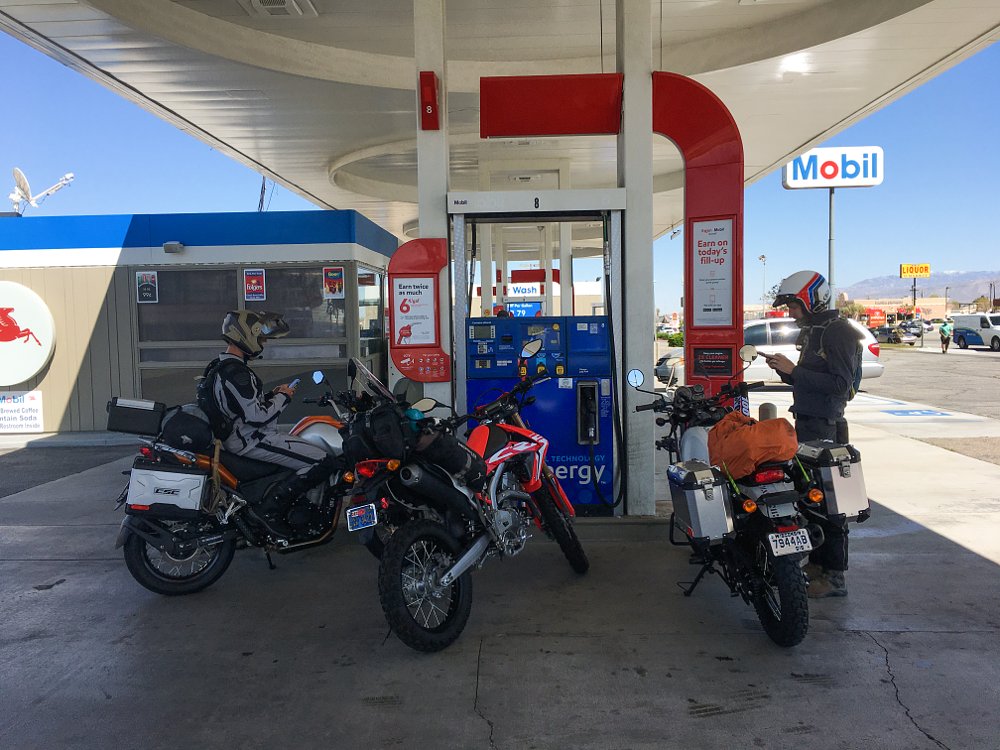
Whatever shortcomings the CRF had on the pavement, it more than made up for once we hit the dirt. I could name them all, but there is literally nothing that a Himalayan or an RX4 will do better off-road. The CRF has more ground clearance, far better dirt tires, a lovely transmission, good brakes, and is much easier to navigate through difficult terrain, thanks to being more than 100 pounds lighter. Zack and Ari’s ADVs have lower seat heights, but since I’m about six feet tall I think the 31.5-inch Himalayan seat height is lower than it needs to be. For reference, the seat height of a Honda Grom is 30 inches. I found the CRF was easy to mount and dismount, even with a heavy backpack on steep hills.
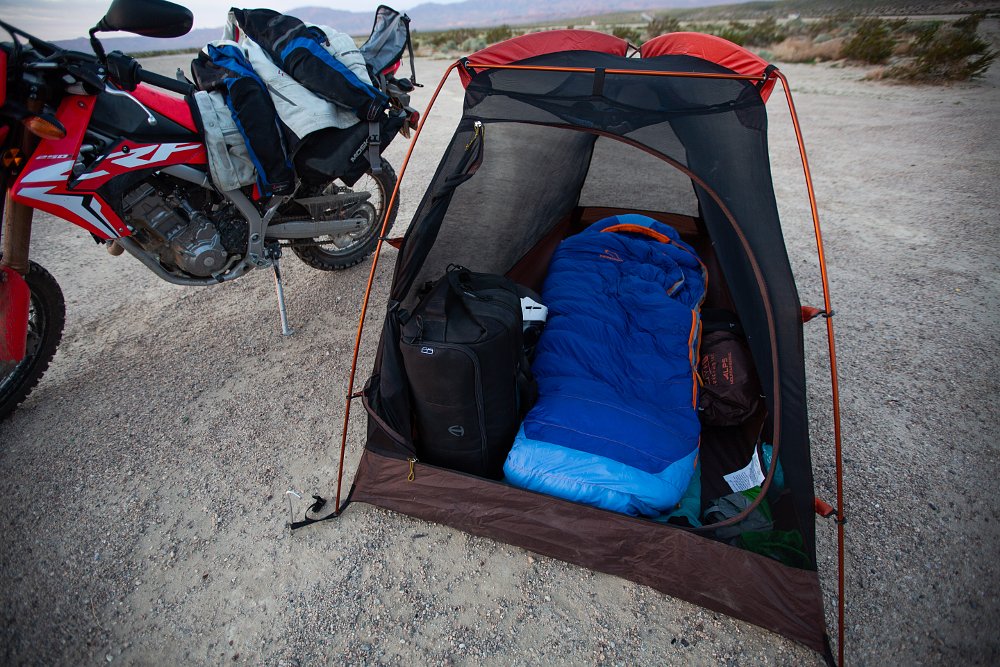
The most common complaint I’ve heard about the 250L is the soft suspension. Soft though it is, the suspension didn’t bother me. Even with a Beverly-Hillbillies amount of luggage, it never bottomed out and always responded in a gentle, predictable manner. If I were trying to keep up with my buddies on KTM dual-sports I would probably start to feel handicapped by it, but if you have ill-advised friends who go enduro riding on their RX4 or Himalayan, I promise the CRF’s suspension isn’t going to be a problem.
I have one large and one small complaint about the 250L, neither of which are solved by getting the Rally edition. My first complaint is the power. It’s a silly complaint about an entry-level bike, I know. But my problem is that Honda upgraded their CBR250R to a CBR300R a few years ago, so I can’t help but want the same 300 cc treatment for the CRF. Of course, I’m sure if a CRF300L ever does come to fruition I’ll immediately ask for a CRF350L. The grass is always greener and an extra 50 cc never hurt anyone. As it stands, the 250L is just a little too slow and the 450L seems a little too big, so I can’t help but want something that keeps the 250 size with some of that 450 grunt.
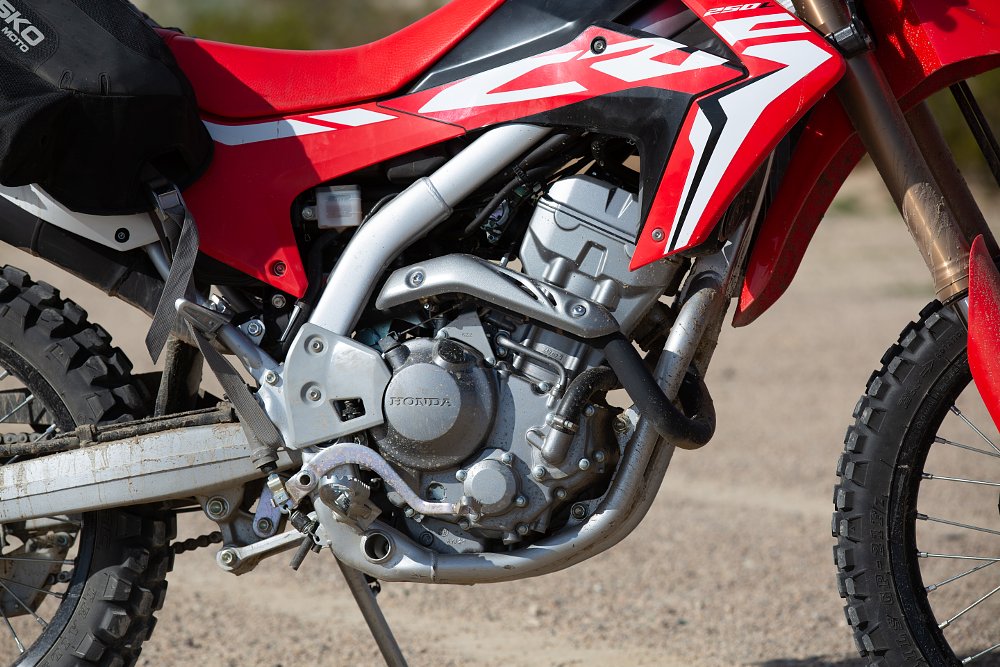
My final complaint is about the gas fill-up user experience. Yeah, buckle up. This is my direct line to the nit-picking hall of fame. Not only does the gas cap fully detach when it is unlocked, meaning you have to place the cap on the handlebars or up on the pump, but there are metal bars just inside the filler neck which prevent a fuel nozzle from fully entering the tank. In California this is a particularly annoying quirk because our fuel pumps require (pardon the expression) full insertion in order to activate the fuel flow. This isn’t a reason not to buy the bike, but it’s an annoying quirk on an otherwise shockingly reasonable machine. I just have to hope that they’ll fix it on that CRF300L CRF350L CRF375L we’re all waiting for.
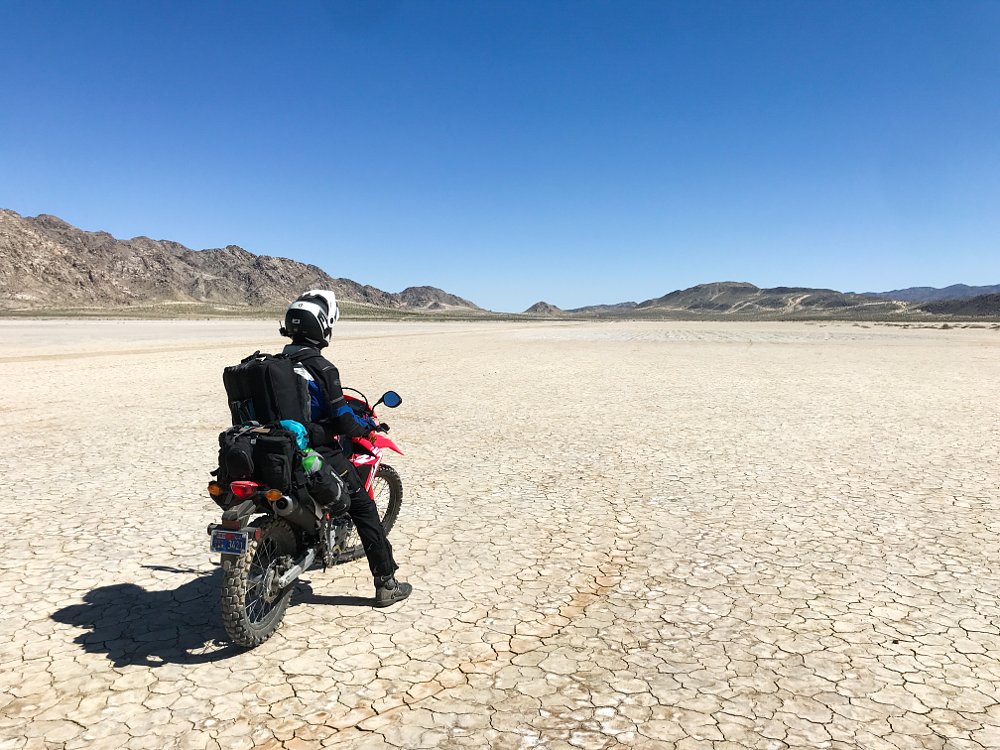
Conclusion
A cameraman’s bike doesn’t need to be fast, it doesn’t need to be fancy, it just needs to hold all your stuff, be easy to ride, and reliably get you from Point A to Point B. If it happens to make you look like a better rider than the people you’re filming, that’s all the better. And without humble bikes like the CRF250L, a dutiful machine that’s rarely on the cover of magazines, we’d have a hard time making videos or taking photos of the flashier machines that do. So, by that measure, we all owe a debt of gratitude to these bikes — the modern day pack mule (motorus packmuleus) that makes my job possible and helps keep the stoke of motorcycling alive.










